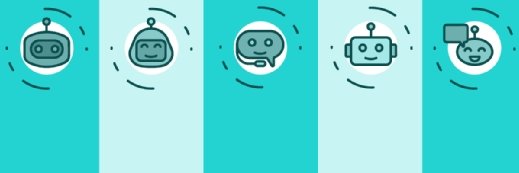
Custom GPTs: Examples and how to build
Discover how custom GPTs offer ChatGPT users a no-code way to personalize their chatbot experience. Learn about the benefits, setup process and examples of these AI agents.
ChatGPT has an added level of personalization and automation built in for paying users.
In November 2023, OpenAI added the custom GPTs feature to ChatGPT. With the increased prevalence of small and proprietary language models -- designed for specific tasks or data sets -- OpenAI introduced GPTs to give ChatGPT users more control over their experience by narrowing the chatbot's focus.
With just a set of prompts -- and supporting documents if the user chooses -- ChatGPT users can create agents within the platform that further automate use of the chatbot.
What are custom GPTs?
Custom GPTs are a no-code feature of ChatGPT that lets users customize the chatbot according to the specific way they use it. The user enters a series of text prompts into the GPT builder, giving instructions to the bot. The GPT builder compiles the set of instructions the user entered to serve as its guiding rule. The GPT builder then automatically generates a name for the GPT, which the user can change later.
The user can provide additional context through files they upload to the platform. They can also link the GPT to third-party services to perform actions with applications outside of ChatGPT, such as workflow automation or web browsing. GPTs are shareable between ChatGPT users and can also be made public. When a GPT is made shareable, it generates a link to the GPT. When a GPT is made public, it is accessible to search engines.
Benefits of custom GPTs
The benefit of GPTs is convenience. It lets users amass their own prompt library without manually retyping specific prompts. Users can create multiple GPTs that provide a more specific output based on the user's prompts. GPTs basically provide a chatbot to help the user with prompt engineering and a platform for sharing the prompts they've engineered.
One benefit of GPTs for OpenAI is they may entice more users to sign up for the premium subscription and encourage users to share personal files and data with custom GPTs through the Knowledge feature. The Knowledge feature is the part of the GPT builder that lets users upload files to give the bot context.
How to set up a custom GPT
Creating a custom GPT essentially lets paying users craft prompts with ChatGPT that become guidelines for the custom bot. Below are instructions for creating a custom GPT:
- Visit ChatGPT with a ChatGPT Plus or Enterprise subscription, and log in.
- Click Explore in the left-hand navigation bar.
- Select Create a GPT.
- Enter instructions in the message box of the Create page. Alter the instructions until the output is favorable.
- Click Configure for more advanced customization options. Users can do the following:
- Further hone the prompt generated by the instructions.
- Enter conversation starters, which are sample inputs the user could click on.
- Upload files to give the bot context.
- Set up specific actions.
- Give the bot a name.
- Select Save, and choose a sharing option. Users can limit access to just themselves, open it to anyone with the link, make it public or share with anyone in your workplace for Enterprise users.
- Click Confirm.
Actions let the GPT access third-party applications, such as Asana or Zapier, through a custom API and an OpenAI schema.
How to find other people's GPTs
OpenAI released its GPT Store, where users can monetize their own GPTs, in January 2024. There are other ways to find custom GPTs from other users. To find all public GPTs indexed by Google, enter the following in Google: site:https://chat.openai.com/g, and Google returns custom GPTs in the search results. This method generates many results but is not focused. To focus on more on a specific topic or type of GPT, the user can search site:chat.openai.com followed by the keyword they are interested in.
Some users have created GPTs that search for other GPTs using this logic. The prompt for these GPTs uses the Google search operator -- site:chat.openai.com -- mentioned above to curate lists of GPTs based on the user's request.
Custom GPT examples
GPTs hone specific tasks that ChatGPT can accomplish. They can be content generators, writing assistants, image generators and language translators. These can be used for personal or professional use. Examples of custom GPTs currently available include the following.
Deep Game
Deep Game lets users play through a generic, AI-generated story as a character. AI generates a new image, description and prompt for what to do on each step.
Data Analyst
Data Analyst helps users display the contents of files or create data visualizations, such as pie charts, bar charts and graphs, based on data files added to the chat.
The Negotiator
The Negotiator helps users advocate for themselves and learn how to negotiate in a professional setting. For example, the bot can help them role-play a salary negotiation.
Sous Chef
Sous Chef helps users cook by giving recipe suggestions based on pictures or descriptions of ingredients.
Math Mentor
Math Mentor helps younger users and parents learn math based on descriptions or photos of a problem. For example, the bot could help parents explain long division to an 8-year-old or explain a problem based on a photo uploaded by the parent.
The Pythoneer
The Pythoneer helps users learn about the Python coding language using the tone of an old-timey pioneer. The bot gives users challenges and tips related to Python.
SQL Ninja
SQL Ninja helps users learn SQL. The user can ask questions about the programming language, and the bot answers.
HTML Wizard
HTML Wizard helps the user learn HTML through examples, explanations of web standards and coding puzzles.
CVEs
CVEs helps users look up Common Vulnerabilities and Exposures (CVEs). CVEs are a list of publicly available information security flaws.
Meeting Master
Meeting Master turns meeting transcripts into minutes, tasks and key points.
README.bot
README.bot walks users through OpenAI's documents and API references.
SEO Expert
SEO Expert analyzes websites based on several search engine optimization quality metrics, such as page speed data and basic metadata about the site, and then provides expert advice.
Bias Detector
Bias Detector looks at news stories for biases toward the left or right side of the political spectrum based on a provided URL or news story text.
Safe Food
Safe Food analyzes the nutrition facts of a food based on a picture uploaded by the user and then returns information about the ingredients.
5 LEVELS
5 LEVELS describes any concept in five levels of complexity, including child, teen, college student and graduate student.
Editor's note: The information contained in this article was sourced through internet research. The list of GPTs is nonexhaustive -- just a snapshot of the GPTs available at the time of writing.
Ben Lutkevich is a writer for WhatIs, where he writes definitions and features.







